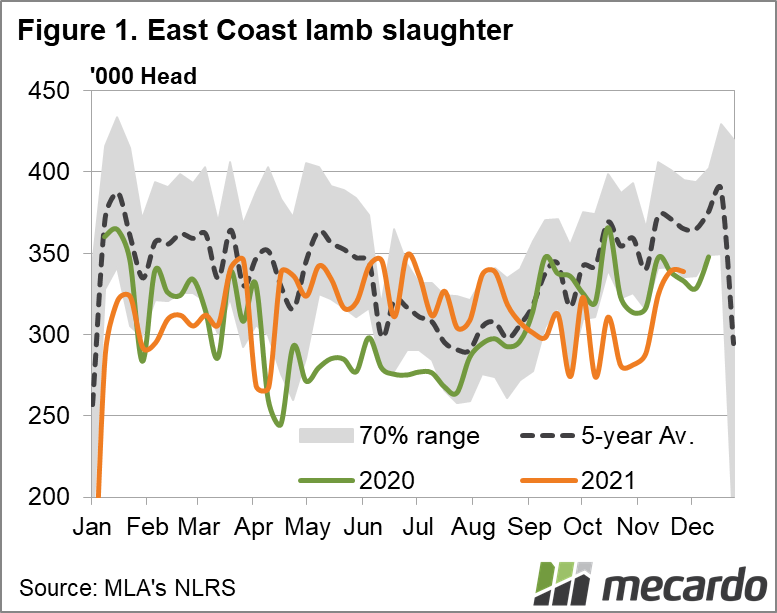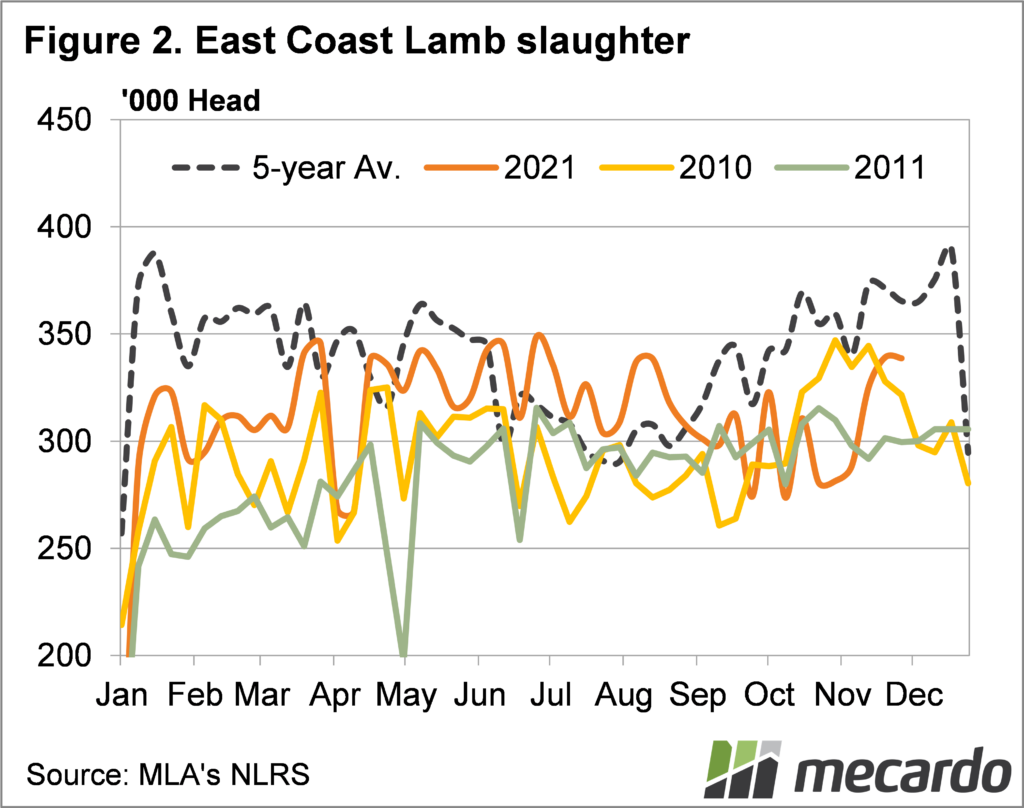It’s a question that comes up every spring, when will the lamb supply glut come? Lamb producers, especially in the south are perpetually trying to balance paddock feed supplies, lamb weight and price to maximise their returns. There is good news for producers, but they still need to be wary.
Spring lamb slaughter has been very low in historical terms this year. With processors running below capacity to match the more limited spring supplies, we still saw prices ease, but they are still well inside the profitable range for those producing lambs.
Indeed, the Eastern States Trade Lamb Indicator (ESTLI) is still well above this time last year. There is understandable concern from growers that holding lambs for another 2 or 3 weeks might see price falls negate weight gains.
A fortnight ago we did finally see a kick in lamb slaughter, despite the heavy rains in NSW. And the lift has made for some interesting states. Figure 1 shows that week 47, the week ending the 19th of November was the first time east coast lamb slaughter had been at the same level as 2020 since the end of August.
However, the heavier lamb slaughter weights in winter mean that total lamb slaughter since the first of July is actually 0.4% higher than 2020. It’s hard to know if lambs were slaughtered earlier this year, or more old season lambs were held over, or they are not coming to market at all. When we say they are not coming at all, this year it will be because they are ewes being kept for breeding, or merino wether being kept for wool. With La Nina, and a wet spring and summer, there is plenty of green incentive to hold onto sheep.
Which brings us to the last time we had a very wet La Nina, combined with a strong flock rebuild. Figure 2 shows east coast lamb slaughter in 2010 and 2011, and it makes for interesting analysis. From this week in 2010 lamb slaughter fell into Christmas, and started 2011 at levels much lower, not recovering until May 2011.
Figure 3 shows how the market reacted to low supplies in early 2011, with a rapid price rise to record levels. In fact, the 2011 price peak saw lamb values in US dollar terms stronger than they are now. We should remember that in early 2011 wool prices were at peaks, not only for Merino but crossbred wools as well. This would have had a strong impact on sheep retention.
What does it mean?
There remain negative factors, in the labour shortages for processors, and possibly higher feed grain prices this year, but the green grass should provide solid support through much of summer. If we look at 2010-11, the supply glut didn’t appear until May, but every season is different in some way.
Have any questions or comments?
Key Points
- Spring lamb slaughter has jumped higher with stronger supplies in recent weeks.
- The total lambs slaughtered since July is very similar to this time last year.
- The last wet La Nina saw extremely tight lamb supplies in summer.
Click on figure to expand
Click on figure to expand
Click on figure to expand
Data sources: MLA




